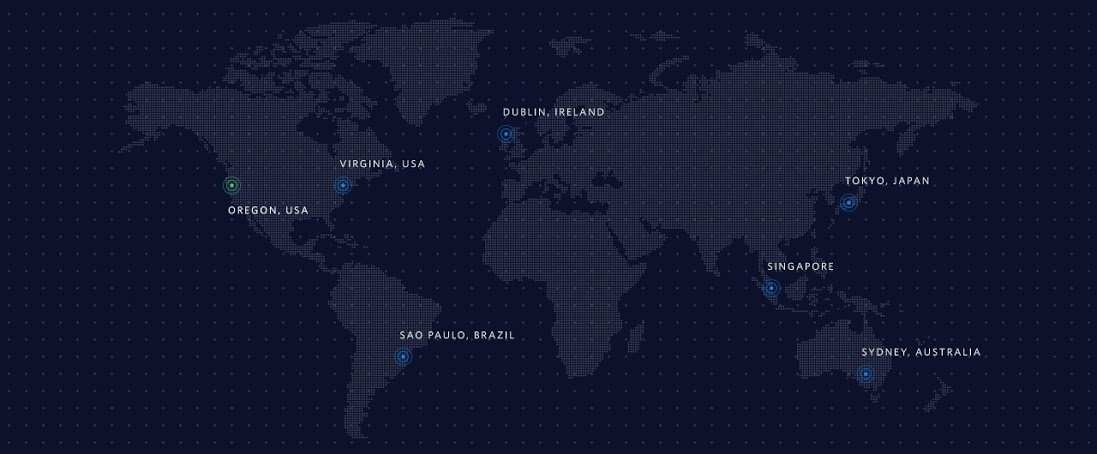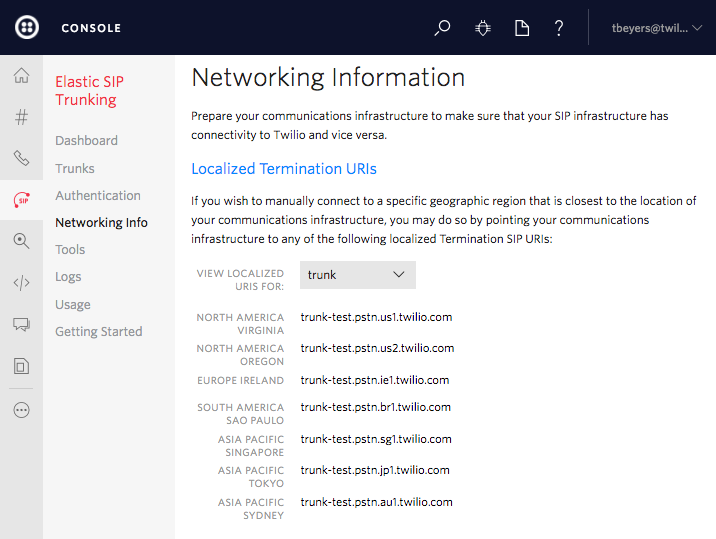Introducing Elastic SIP Trunking in Oregon, USA
Time to read: 4 minutes

Today, we’re excited to announce that Twilio has expanded its global footprint with the introduction of the North America – Oregon region (US2) for Elastic SIP Trunking. Adding data centers in Oregon gives you great audio fidelity and resiliency, at no extra cost. Let me tell you why.
Optimum Audio Fidelity
We saw an increasing amount of VoIP calls taking place on the west side of North America. There’s no need for a west coast call to make the 70 millisecond trip to the east coast and back, so Twilio is now providing local data centers in this region. These new data centers mean your calls stay local with high call quality.

Resiliency and Redundancy
You expect a highly available service. Your business depends on it. Let’s dive into the industry best practices that Twilio follows to ensure your business continuity.
Twilio has implemented redundancy and engineered resiliency into every tier of the signaling and media path in all seven regions across five continents.
Each region has multiple data centers, and each of those data centers has multiple hot/standby customer facing servers. All internal nodes in a region are clustered and interconnected with low latency fiber, so in the case of a hardware failure, another node is instantly ready to handle calls. Each data center is equipped with redundant power, networking, and connectivity. Unfortunately, natural disasters do occur and can bring down, for example, all internet connectivity to an entire region. In this case, provide a second route to a neighboring Twilio region and your communication continuity is preserved.
Twilio has built a Super Network that interfaces intelligently with multiple carrier networks in each region around the world.
It abstracts the commercial and technical complexities while providing unlimited cloud scale and redundancy that can’t be achieved by a legacy physical network. The Super Network continually analyzes data to optimize the quality of the voice communications running through the platform.
We partnered with Twilio because we needed geo-redundancy in two regions in North America with private connectivity. Twilio’s customer support and technical expertise is leaps and bounds ahead of traditional carrier partners. Our business depends 100% on Twilio.
Keith Nelson – CIO – Ruby Receptionist – Live Virtual Receptionist Service
You should steer clear of service providers with signaling coming from a single region which might be hosted in a single data center. This suggests their world-wide service is vulnerable to a power or ISP outage in a single region.
How to achieve maximum redundancy
Best Practices for Trunking Termination (outgoing traffic from your communications infrastructure to the PSTN):
- Connect to the closest region: Send SIP to the nearest geographic region to your communications infrastructure.

- Intra-regional redundancy: Verify that your PBX will iterate through all IP addresses found in the Answer records provided in the DNS response. Twilio will respond with 3-4 IP addresses per localized Termination SIP URI. Each IP address in this DNS response corresponds to a separate data center. For more information click here.
- Inter-regional redundancy: In your PBX configuration, create a secondary failover route with a localized Twilio termination SIP URI that points to another Twilio region. If your primary region has an outage, your voice traffic will be routed to the PSTN via the second region. In North America, if your primary region is US1, then specify US2 as your secondary region. If your primary region is US2, then use US1 as your secondary region.
Best Practices for Trunking Origination (incoming traffic to your communications infrastructure from the PSTN):
- You must allow all of Twilio’s signaling and media IP addresses. In North America, under normal operating conditions media will egress from either region. In case of an outage, media may travel across Twilio’s Super Network and egress from a different Twilio region. See the list here.
- Stand up two or more regionally separated SBC/PBX.
- Configure the Origination URIs to provide a second route to handle calls should your communications infrastructure fail. Traffic should be load-balanced across all SBC/PBX and if a SBC/PBX fails the remaining will absorb the traffic.
- Configure a Disaster Recovery URL to forward your calls to another device or send to voicemail in the event of a communications infrastructure failure.
The Technical Details
- To select the nearest localized Twilio termination SIP URI.
- To create multiple Origination URIs for failover and load balancing.
- You can find a detailed Configuration Guide here.
These documents are intended as general guidelines rather than configuration templates.
If you’re looking for more help in configuring your PBX, check out our Twilio Expert Services which include pre-packaged workshops, review and optimization services, and custom consulting engagements to help with best practices and technical integrations. Click here to sign up for Expert Services.
Let’s Recap
You use Twilio Elastic SIP Trunking to connect your IP-based communications infrastructure to the publicly switched telephone network (PSTN). It enables you to start making and receiving telephone calls to the ‘rest of the world’ via any broadband public internet or private connection.
Twilio has built redundancy and engineered resiliency into its service at every tier – both are necessary for a highly available system. A redundant system includes multiple compute, networking, and storage resources in case of individual failures. Resilience refers to a system’s ability to adapt to failures and resume normal operations when failures have been resolved.
With the new North America – Oregon (US2) region, Twilio now has 22 data centers in 7 regions on 5 continents, which includes Sao Paulo (BR1), Dublin (IE1), Singapore (SG1), Tokyo (JP1) and Sydney (AU1) and Virginia (US1). We expect to announce additional regions in 2017.
Twilio’s global footprint brings you optimum audio fidelity and geo-redundancy – Elastic SIP Trunking is a service your business can rely on.
If you’d like to learn more:
We can’t wait to see how you use Twilio.
Related Posts
Related Resources
Twilio Docs
From APIs to SDKs to sample apps
API reference documentation, SDKs, helper libraries, quickstarts, and tutorials for your language and platform.
Resource Center
The latest ebooks, industry reports, and webinars
Learn from customer engagement experts to improve your own communication.
Ahoy
Twilio's developer community hub
Best practices, code samples, and inspiration to build communications and digital engagement experiences.